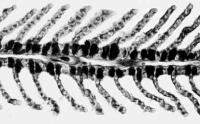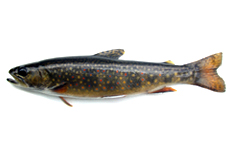
Brook trout (Salvelinus fontinalis)
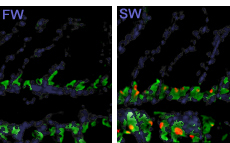
Gill immunofluorescence from freshwater or seawater-acclimated alewife (Alosa pseudoharengus)
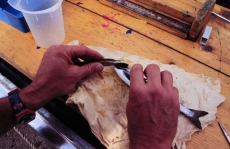
Collecting non-lethal gill biopsy from an Atlantic salmon smolt (Salmo salar)
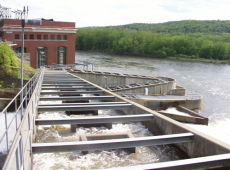
Fish ladder at Cabot Station Power Plant, Turners Falls, MA
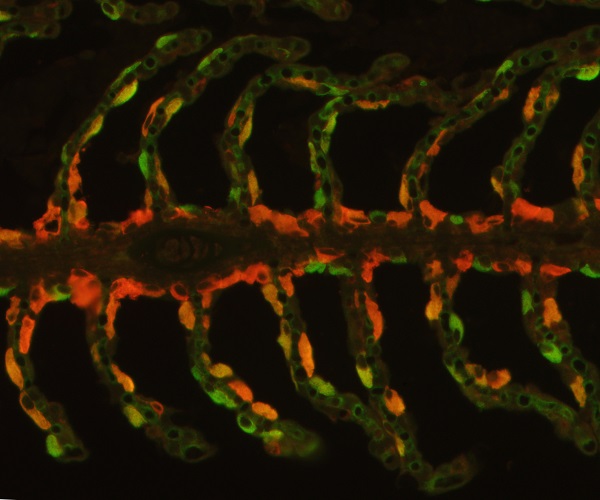
Immunohistochemically-labeled gill ionocytes from a seawater-acclimated Atlantic salmon (Salmo salar)
Current Projects:
Identification, localization and endocrine regulation of gill ion transport proteins that secrete salts as anadromous fish move from freshwater to seawater.
Thermal physiology of salmonids, including brook trout, Atlantic salmon and Alaskan sockeye salmon.
Comparison of salinity tolerance and feeding in landlocked and anadromous sea lamprey.
Effects of temperature and energy use on fish passage and spawning success of American shad.
Hormonal control of osmoregulation in basal vertebrates, including sea lamprey and Atlantic sturgeon.
Funding sources:
In addition to the base support of the USGS, we have obtained funding for our research from the following agencies:
Northeastern States Research Cooperative (NSRC)
